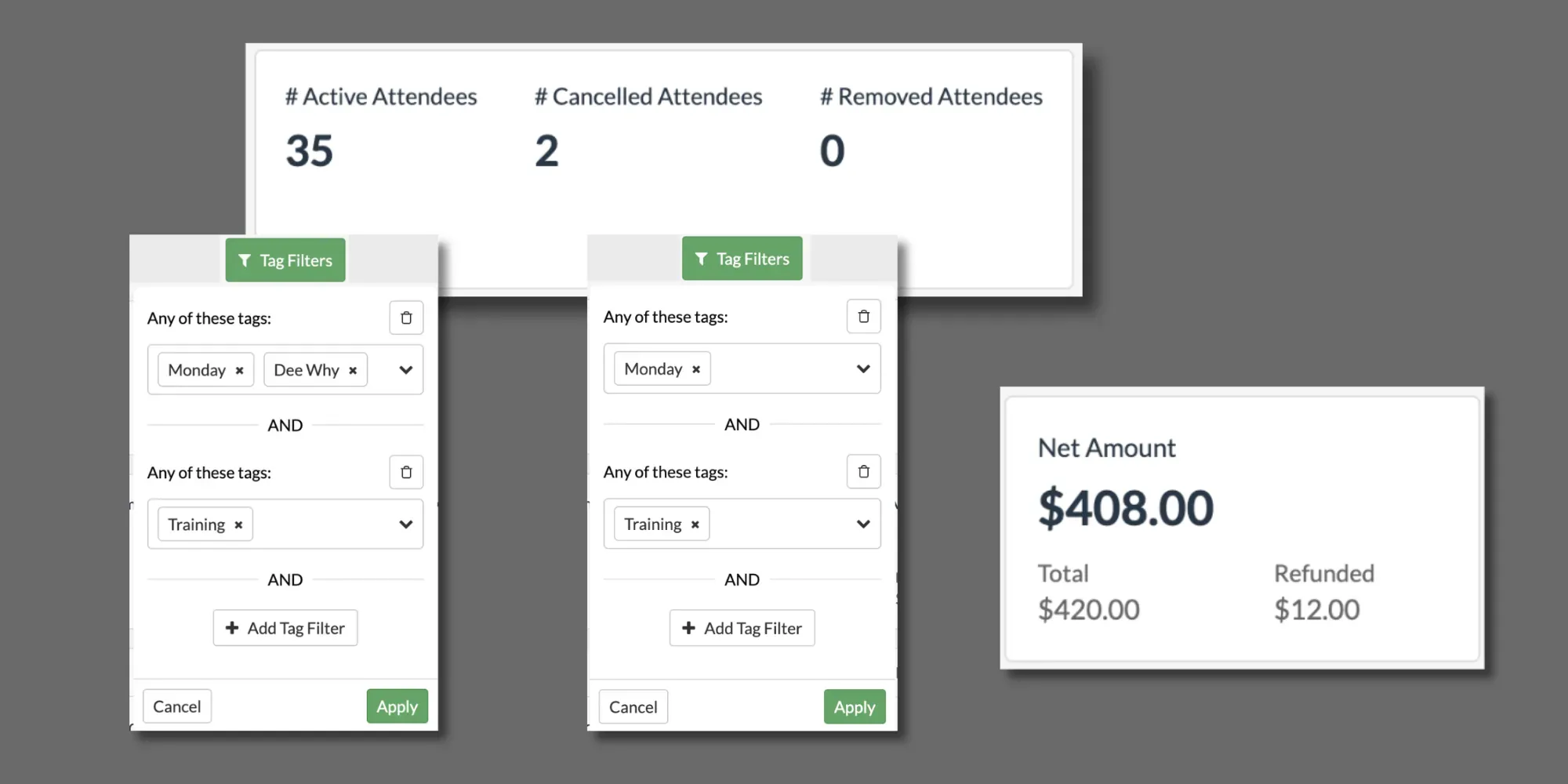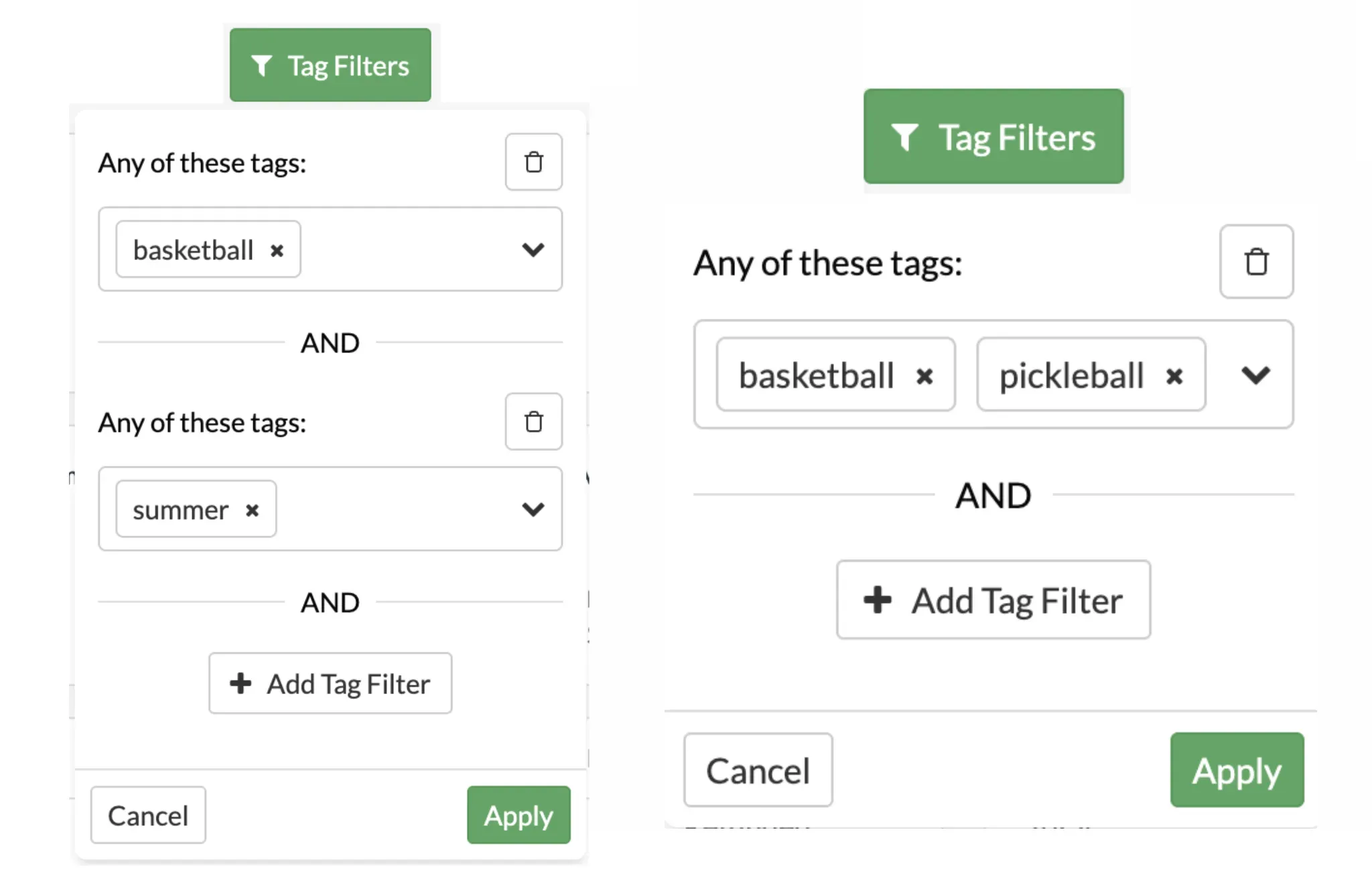OpenSports has upgraded the Reporting Center with new filters and built-in summaries. You can now generate reports based on event and league tags, as well as accounting codes, with instant insights into key metrics like revenue, attendance, and account credit. This makes it easier to spot your most profitable programs and identify those that may need improvement.
How Admins Can Use This to Their Advantage
The flexibility of reporting depends on how your events and leagues are tagged. Whether it's day of the week, location, skill level, coaches, or format, the more intentional your tags, the more powerful your insights.
Use filters to uncover patterns in attendance, revenue, and refunds across custom timeframes. Spot your top-performing programs, identify gaps, and make data-driven decisions to improve scheduling, staffing, promotions, and growth opportunities.
Summary Cards For Quick Insights
Every report now includes a summary section highlighting key stats. Depending on the report type, this may include the number of registered teams and players, net amount collected, and projected revenue. This gives you a quick snapshot of your group's performance at a glance.
Using the Tag Filters Drop Down Menu

Filter reports by specific event or league tags (e.g., open play, clinic, summer, youth) to analyze trends and performance across different types of programming. This helps you:
Understand which event types are most popular or profitable
Compare revenue and attendance across tagged sessions
Refine programming based on engagement data
How the Tag Filter Works
The tag filter gives you flexible control over how you view your data by letting you filter event and league tags using both AND and OR logic.
Use the “AND” section if you want to find events that include multiple tags together.
Example: selecting “Basketball” AND “Summer” will show only events that are tagged with both.Use multiple tags within the same section (without using “AND”) for a broader “OR” search.
Example: selecting “Basketball” and “Volleyball” in one section will show events that are tagged with either “Basketball” or “Volleyball.”
You can also combine AND and OR:
First block: Basketball, Volleyball
AND second block: Summer
This will show events that are tagged with Summer, and either “Basketball” or “Volleyball.”
This gives you the flexibility to:
Narrow results with AND (for more specific matches)
Broaden results with OR (to include more event types)

Filtering by Accounting Codes
Filter transactions by specific accounting codes using the dropdown menu. This allows you to isolate payments linked to a specific code and generate reports for particular events or programs.
Note: The Accounting Code filter has been added to event transactions and all group-level league reports. This filter is not available on individual league-level reports, as each league can only be linked to a single accounting code.
Track Revenue by Date or Event
Use pre-set date ranges (like Last 7 Days or Month to Date), or select custom start and end dates using the calendar. You can now view Event Transaction data By Order Date or By Program/Event Start Date. This helps you understand when revenue was collected versus when events occurred, making it easier to spot seasonal trends, align income with related expenses, and ensure accurate financial reporting.
Set Your Report Time Zone
Set the time zone used to determine which transactions are included in your report. This ensures that only orders placed within your selected date range, based on the correct local time, are captured and reflected accurately in your data.
Edit Columns
Customize your report view by selecting only the columns that matter most to you.
Defining Key Terms in Reports
To help you better understand your data, here’s what each reporting metric means:
Net Amount: The total amount paid, minus all refunds, across all payment methods (credit card and account credit).
Net Credit Card Amount: The total received through credit card payments, minus credit card refunds. This reflects the net processed via credit cards and includes processing fees.
Net Account Credit Amount: The total account credit used for payments, minus any credit refunded back to users.
Questions? Send them our way: support@opensports.net